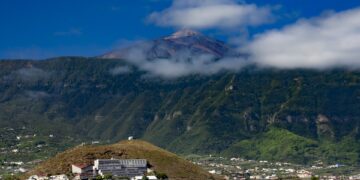Santa Cruz de Tenerife 20 Mar. (Europa Press) –
The president of the Canary Islands, Fernando Clavijo, unveiled the ‘Dynamiza Rural’ Plan this Thursday, an ambitious initiative designed to promote the socio-economic advancement of the 46 Canarian municipalities with fewer than 10,000 residents in the archipelago. This initiative focuses on revitalising the primary sector, bolstering the local economy, and combating depopulation in the medianías.
Clavijo was joined by Narvay Quintero, the Minister of Agriculture, Livestock, Fishing and Food Sovereignty for the Government of the Canary Islands; Mari Brito, the president of the Canarian Federation of Municipalities (Fecam); Alfonso Cabello, the Deputy Minister of the Presidency of the Government of the Canary Islands; and the CEO of the Rural Environment of the Canary Islands (GMR CANARIOS).
Set to be developed throughout 2025, this initiative is aimed at enhancing the primary sector and fortifying its value chain, thereby generating economic opportunities and reinforcing other sectors associated with education, sports, and sustainable tourism in the rural regions of the Canary Islands. The plan also includes training activities for the involved stakeholders.
Clavijo emphasised that rural areas form the “roots” of the islands and are the “living pulse” of their identity.
“The project we are introducing today is a crucial tool to reinvigorate the local economy, showcasing the uniqueness of each of our communities and the importance of the rural environment as a valuable asset of the Canary brand,” he stated.
He further remarked that “collaboration between administrations will be essential to truly enhance the quality of life for residents in these municipalities and ensure generational continuity. This will be achieved through the collective efforts of the Canary Islands government, FECAM and the involved municipalities, laying the groundwork for a new model of economic rejuvenation and territorial balance.”
Quintero commented that this strategy “is inspired by the efforts that the public company GMR Canarias has been implementing for years to spotlight the contributions of professionals within the primary sector, as well as to promote the consumption of local products.” He asserted that this initiative, arising from the governance and Fecam leadership, “represents a cross-cutting commitment from all government areas towards these municipalities. It is an initiative aimed at defending rurality while enhancing local produce, tourism, landscapes, and the culture of the Canary Islands.”
Vicente Rodríguez, the president of the Rural Development Commission of the Fecam, explained that this programme values what is present, “enhancing it,” as it pertains to the “characteristics of the territory.”
“We hope it enables us to enrich our existing resources, facilitating growth in other areas, and that all these initiatives yield a multiplier effect,” he added.
Synergies between Producers, Hoteliers, and Merchants
The Plan, which will be executed through the GMR Canary Islands public company under the ‘Grow Together’ project and coordinated by the government presidency, will establish a catalogue of actions that foster synergies among all involved parties, from farmers, livestock keepers, and fishermen to local and artisanal producers, hoteliers, suppliers, merchants, distributors, and tourist agents.
Consequently, a range of measures is set to be introduced to encourage the local economy in rural municipalities, such as training workshops for producers, hoteliers, and other local stakeholders; the preparation of gastronomic guides that showcase products from each area; organisation of fairs and markets to promote zero-kilometre products; or dynamisation activities that encourage the consumption of nearby produce in restaurants, among others.
This project is part of the Canarian demographic challenge strategy implemented by the Government of the Canary Islands, which encompasses around fifty actions aimed at fostering sustainable economic development across the islands and ensuring equal opportunities throughout the archipelago. This aims to curtail population decline and advance the economic and social sustainability of these regions.
















